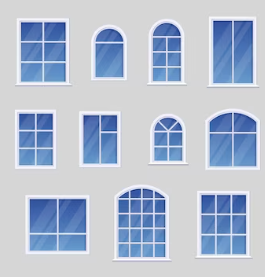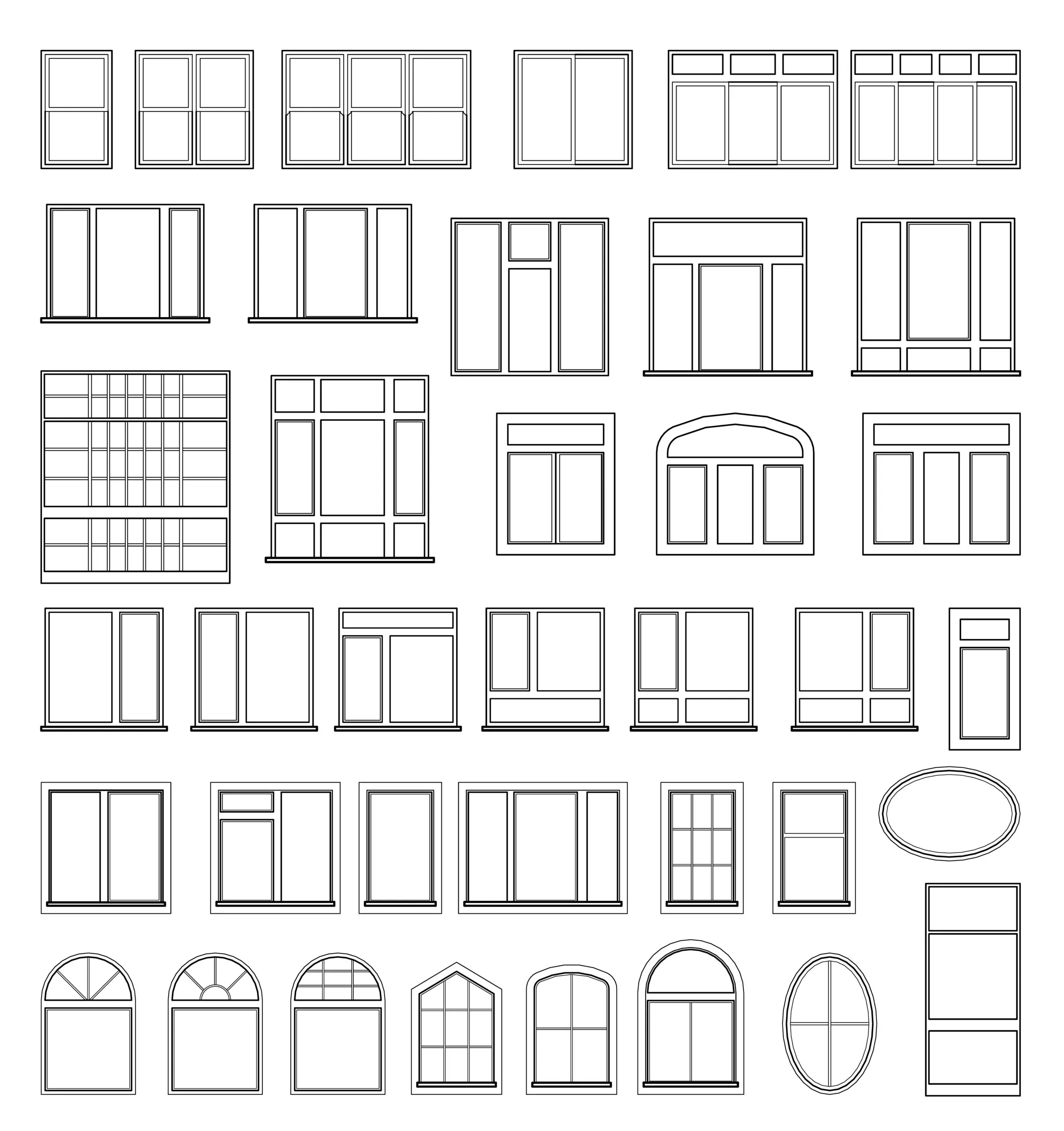Redrawing Boundaries: The Three Principles of Minimalist Windows
Embracing Simplicity in Window Design
In today’s fast-paced world, the concept of simplicity has become increasingly appealing. This is particularly evident in the realm of home design, where minimalist aesthetics have gained significant popularity. Embracing simplicity in window design can transform a space, creating a serene and uncluttered ambiance.
Minimalist windows are at the forefront of this design movement. They adhere to the principles of minimalism by focusing on clean lines, unadorned frames, and a reduction in unnecessary elements. By removing excessive detailing and ornamentation, minimalist windows allow natural light to take center stage while seamlessly integrating with the overall aesthetic of a space.
The beauty of simplicity lies in its ability to create a sense of calm and tranquility. Minimalist window designs enhance this effect by providing unobstructed views and allowing nature to become an integral part of interior spaces. With their sleek profiles and understated elegance, these windows effortlessly blend into any minimalist home design.

Moreover, embracing simplicity in window design goes beyond just aesthetics; it also brings practical benefits. Minimalist windows often feature advanced energy-efficient technologies that help regulate temperature and reduce energy consumption. By prioritizing functionality alongside aesthetics, these windows offer both style and sustainability.
Whether you’re designing a contemporary urban loft or a cozy countryside retreat, embracing simplicity through minimalist window designs can elevate your space to new heights. By incorporating these principles into your home’s architecture, you can create an environment that fosters tranquility, promotes natural light flow, and complements your overall minimalist aesthetic vision.
Principle 1: Clean Lines and Uncluttered Surfaces
Clean lines and uncluttered surfaces are the epitome of modern window design. In today’s fast-paced world, where simplicity is valued more than ever, minimalistic window frames have become increasingly popular. These sleek and simple windows not only enhance the aesthetic appeal of a space but also create a sense of openness and tranquility.
The concept of clean lines in window design revolves around the idea of eliminating unnecessary elements and focusing on the essentials. By opting for clutter-free windows, you can create a harmonious balance between functionality and visual appeal. The absence of excessive decoration or intricate detailing allows the natural beauty of the surroundings to take center stage.
Minimalistic window frames offer numerous benefits beyond their striking appearance. They allow an abundance of natural light to flood into a room, creating a bright and inviting atmosphere. Additionally, their streamlined design makes them easier to clean and maintain, saving you precious time and effort.
Whether you are designing a contemporary home or renovating an existing space, incorporating clean lines and uncluttered surfaces in your window design can transform any room into an oasis of serenity. Embrace simplicity, embrace minimalism – let your windows speak volumes with their sleekness and elegance.
Principle 2: Maximizing Natural Light and Views
In the pursuit of creating spaces that are both visually appealing and functional, the role of natural light and views cannot be overstated. By incorporating minimalist windows, we can optimize the flow of natural light into a space while maximizing the views it offers.
Minimalist windows are designed to minimize obstructions and maximize the amount of light that enters a room. These sleek and streamlined windows not only enhance the aesthetic appeal of a space but also allow for an abundance of natural light to flood in, creating a bright and inviting atmosphere.
Furthermore, by strategically placing these windows, we can optimize the views that they offer. Whether it’s a breathtaking landscape, a bustling cityscape, or simply a serene garden view, maximizing these vistas can greatly enhance the overall experience within a space.
The principle of maximizing natural light and views goes beyond just aesthetics. It has been proven that exposure to natural light has numerous benefits for our well-being, including improved mood, increased productivity, and better overall health. Similarly, having access to pleasing views can have a positive impact on our mental state and help create a sense of connection with nature or our surroundings.
By prioritizing minimal obstruction of both light and views through thoughtful window placement and design choices, we can create spaces that not only look beautiful but also promote well-being and enhance our daily experiences.
Principle 3: Integration with Surrounding Architecture and Environment
When it comes to architectural design, one of the key principles is the harmonious integration of windows with the overall structure and environment. The goal is to create a seamless blend between the building’s architecture and its surroundings, ensuring that the windows not only serve their functional purpose but also enhance the aesthetic appeal of the space.
Contextual window design plays a crucial role in achieving this integration. By carefully considering factors such as building style, materials, and surrounding landscape, architects can create windows that complement and enhance the overall design. Whether it’s a modern skyscraper or a traditional cottage, contextual window design ensures that each structure feels like an organic part of its environment.
Blending windows with the environment goes beyond mere aesthetics; it also considers practicality and energy efficiency. By strategically placing windows to maximize natural light and ventilation while minimizing heat gain or loss, architects can create spaces that are both visually pleasing and environmentally sustainable.
In conclusion, integrating windows with the surrounding architecture and environment is a fundamental principle in architectural design. Through thoughtful contextual window design, architects can achieve harmony between buildings and their surroundings while enhancing functionality and energy efficiency.
Inspiration: Stunning Examples of Minimalist Windows in Modern Architecture
When it comes to modern architecture, minimalist windows play a crucial role in creating a sleek and sophisticated look. These windows not only provide ample natural light but also serve as stunning design elements that enhance the overall aesthetic of a building.
In this section, we will explore some breathtaking examples of minimalist windows in contemporary architecture that are sure to inspire both architects and design enthusiasts alike. From residential homes to commercial buildings, these examples showcase the innovative use of minimalist window designs in various architectural contexts.
By examining these examples, you will gain insights into how architects have successfully incorporated minimalist windows into their designs to create visually striking and functional spaces. Whether you’re looking for inspiration for your own architectural project or simply appreciate the beauty of minimalism in design, this section will provide you with a curated collection of remarkable examples to ignite your creativity.
Join us as we delve into the world of minimalist window inspiration and discover how these architectural marvels have transformed spaces through their elegant simplicity and harmonious integration with contemporary design principles.
The Benefits of Choosing Minimalist Windows for Your Home or Office Space

Minimalist windows offer a range of benefits that make them an excellent choice for both homes and office spaces. One of the key advantages is their simplistic aesthetics, which can enhance the overall look and feel of any interior or exterior design. The clean lines and minimalistic frames create a modern and sophisticated appearance that complements various architectural styles.
Another significant benefit of minimalist windows is the increased natural light they bring into a space. These windows are designed to maximize the amount of sunlight entering a room, creating a bright and airy atmosphere. Natural light not only enhances the visual appeal but also has numerous health benefits, such as boosting mood, productivity, and overall well-being.
In addition to their aesthetic appeal and natural light benefits, minimalist windows are also highly energy-efficient. Their innovative designs minimize heat transfer between indoors and outdoors, helping to maintain comfortable temperatures throughout the year. This energy efficiency can result in reduced heating and cooling costs, making minimalist windows an environmentally friendly choice.
Whether you are looking to revamp your home or create an inspiring work environment in your office space, choosing minimalist windows can be a smart decision. Their simplistic aesthetics combined with increased natural light and energy efficiency benefits make them an ideal choice for those seeking both style and functionality in their living or working spaces.

